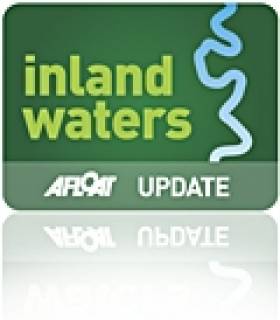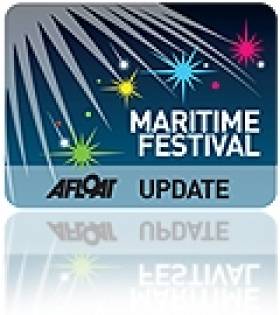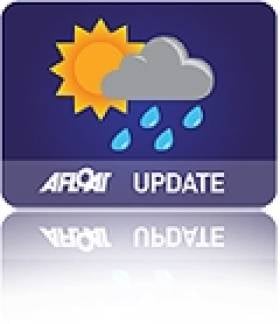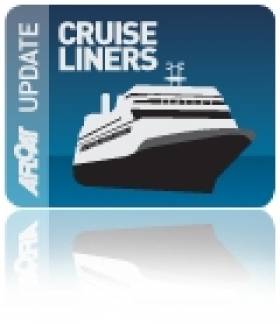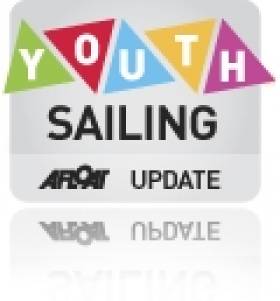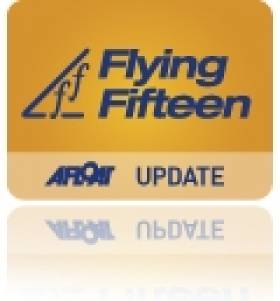Displaying items by tag: Carlingford Lough
Green Light for New Cross-Border Bridge Near Carlingford Lough
#INLAND WATERWAYS - RTÉ News reports that An Bord Pleanála and NI Environment Minister Alex Attwood have granted planning permission for a new cross-border bridge spanning the River Newry near Carlingford Lough.
The single carriageway cable bridge will be 660 metres in length, with most of the funds required being sought from the EU`s €30 million fund for development in border regions. It is hoped to be completed and open to traffic by 2015.
The bridge will cross the river at Narrow Water, an area once notorious for an IRA ambush in 1979 that saw 18 British soldiers killed in a series of explosions.
It will also be able to open to allow tall ships and other vessels to access Victoria Lock and Albert Basin in nearby Newry.
Quoted in the Irish Independent is Pamela Arthurs, who helped lead the project on behalf of both Louth and Down county councils, who said the bridge was first mooted as far back as 1976.
"This has been a major project but it is not just about the fact that we will have a bridge, it is what it symbolises in how far we have come as a country," she said.
Minister Attwood also hailed the project as improving accessibility in a region of substantial natural beauty.
"It will be a great economic boost for the area, creating construction jobs in the short term, enhance tourism and promote greater community interaction across the border," he added.
The Irish Independent has more on the story HERE.
Festival of Oysters...Carlingford Lough
#OYSTER FESTIVAL – The narrow medieval streets of Carlingford, Co. Louth will again be host to the annual Carlingford Oyster Festival, where an action packed festival runs for four days between 9-12th August.
The festival includes the oyster pearl hunt, a sailing regatta, the world crab fishing contest, street entertainment, an oyster tent, food stalls and artisan craft markets and the famous Carlingford seafood chowder.
Also the opportunity to go back in time on a guided Medieval Tour of Carlingford, where children can enjoy a treasure hunt on the shore of the scenic lough and exploring the shorelife and hidden treasures. The festival also has a magic show, face-painting, teddy bear's picnic, crab fishing, kayaking and cookery demonstrations will also keep them occupied.
Last but not least is the Morgan's Ocean Fresh Carlingford Oyster Pearl Competition held for ladies for more information visit www.carlingford.ie and also by clicking HERE.
Weather Warning for Irish Sea as Winter Winds Sweep In
#WEATHER - Met Éireann has issued a weather warning for the Irish Sea for the next 24 hours due to expected gale force westery winds.
A small craft warning has also been issued, with west to southwest winds continuing to reach force 6 tonight on the Irish coast from Carlingford Lough to Roches Point to Slyne Head.
The high winds marks the first wave of real winter weather after a milder-than-average November, the Evening Herald reports.
A forecaster told the paper that strong winds have "reached storm force on the Irish coasts from Belfast Lough to Wicklow Head to Mizen Head and on the Irish Sea.
"We expect that by tonight they will slightly drop but may still reach a strong gale force."
Body on Newry Beach Could Be That of Missing Kayaker
As previously reported on Afloat.ie, area man Mark McGowan, 37, was last seen kayaking in the lough at 7.30pm on Monday 10 October.
His blue kayak was spotted by the Irish Coast Guard on 11 October at Killowen Point, on the north side of the lough.
A cross-border search and rescue operation was immediately launched but progress was hampered due to bad weather.
The Belfast Telegraph reports that a body was discovered on Cranfield Beach near Newry by a member of the public yesterday morning. Formal identification of the body has not yet taken place.
At the time of his disappearance, McGowan was described as 5'7" tall, medium build, with a clean shaven, tanned complexion and short bleached blonde hair. He was last seen wearing a red jacket, blue jeans and white trainers.
Search for Missing Kayaker to Resume
Emergency services were set to decide this morning whether to resume the search for a kayaker who went missing on Carlingford Lough earlier this week, UTV News reports.
Area man Mark McGowan, 37, was last seen kayaking in the lough at 7.30pm on Monday evening.
His blue kayak was spotted by the Irish Coast Guard on Tuesday at Killowen Point, on the north side of the lough.
Dundalk Gardaí are co-ordinating the cross-border search operation, which was interrupted by bad weather early yesterday.
View Larger Map
Also assisting are the Irish rescue helicopter, Greenore coastguard, Kilkeel's RNLI lifeboat, the south Down coastguard team and the Community Rescue Service.
Meanwhile, the PSNI has appealed for anyone who might have information on McGowan's disappearance to get in touch.
McGowan is described as 5'7" tall, medium build, with a clean shaven, tanned complexion and short bleached blonde hair. He was last seen wearing a red jacket, blue jeans and white trainers.
Bikini Registered Motoryacht Follows Cruiseship Out of Dublin
As for Cary Ali, she is a 87ft long was built in 2007 by Nordhavn to a design of Jeff Leishman. From her stern flew the flag of the Marshal Islands in the Pacific Ocean. Inside the four-decked vessel there is the main salon, a dining room, galley and three guest staterooms, and a master cabin (click HERE). In total eight people can be accommodated. In addition she has a jacuzzi, fly-bridge and is equipped with a tender and has crew of four.
She has a speed of 24-knots and is equipped with 50hp bow and stern thrusters. To read more about the luxurious motoryacht including facts and figures click HERE.
The Cary Ali had berthed at the 100-berth marina of the Poolbeg Yacht & Boat Club which caters lesiure craft up to 20 metres and is centrally located on the south side of Dublin Port. The facility has accommodated larger motoryachts over the years. Though even larger motoryachts such as Battered Bull, a Feadship 52m has berthed further upriver at Dublin City Moorings.
- motorboats
- Carlingford Lough
- Dublin Port
- Cruise Liners
- Ports and Shipping
- Lough foyle
- Poolbeg Marina
- motor yacht
- Marshall Islands
- Dublin City Moorings
- Cruise ships
- Greencastle Co.Donegal
- Greencastle Maritime Museum
- Hebridean Princess
- Caly Ali
- MY Caly Ali
- Charter motoryachts
- Motor boat news
- Lough Foyle Ferry Company
Northern Ireland Yacht Club Awarded Volvo RYA Champion Club Status
Carlingford Lough Yacht Club in Northern Ireland has been presented with the prestigious Volvo RYA Champion Club award. Carlingford Lough has been recognised for its very active racing programme focusing on the Laser 4.7, Radial and Topper classes. The club encourages and supports talented young sailors to develop and progress throughout the RYA Youth and Olympic programmes.
The presentation was held at the Yacht club's annual dinner dance and presentation at local Whistledown Hotel, Warrenpoint. Commodore, Michael McCann understands the importance of developing the club's youth sailors "We are all very delighted and proud to have been awarded the coveted Volvo Champion Club status. This achievement is a reflection of the great work, dedication and energy which has been put into youth and junior sailing in recent years.
While a number of senior club members have been involved along the way I must single out our past sailing secretary Dr Henry McLaughlin who worked to fulfil the arduous requirements necessary to gain this recognition. The Club would also like to thank Volvo and the RYANI for this award and we will continue to work with them to promote Championship level sailing in the region."
The club's junior training programme is run by 8 regular volunteers who are committed and dedicated to helping with the racing, training and the club's busy social programme. For the past three years the club has had five juniors in the RYA Volvo national squad and at the 2010 RYA Volvo Zone Home County Championships in Northern Ireland two of the members excelled both finishing in second place.
Carlingford Lough Yacht club is one of only 12 clubs in Northern Ireland and 171 nationwide to be awarded the esteemed Volvo RYA Champion Club status. Richard Honeyford, RYA High Performance Manager for Northern Ireland presented the club with the award "I am delighted to be presenting this award in recognition of the great work that Carlingford Lough Yacht Club has done to help young sailors to develop their racing skills. Following the success of British sailors at the Beijing Olympics, and with the 2012 Olympics fast approaching, we may well be training future Olympians here in Carlingford Lough"
The Volvo RYA Champion Club Programme aims to encourage young sailors and windsurfers at grassroots level to stay in the sport and learn to compete, while encouraging clubs to introduce youngsters to the sport and help develop their skills. The key challenge for the programme is to encourage more young people to start participating in sailing and then progress with their racing careers.
Now Carlingford Lough Yacht club has been awarded the Volvo RYA Champion Club status, the sailors will see increased levels of development advice and professional coaching including support from the RYA. Carlingford Lough will also have access to the recent commitment from Sport England of £1.1m to the RYA's flagship youth sailing initiatives, to further enhance club coach and volunteer development across England over the next three years.
Martin and Murray Continue Flying Form
Strangford Lough sailors maintained their grip at the top of the Irish Flying Fifteen fleet in the last event of the season. National champions Darren Martin and Simon Murray were the winners of the five race light air series on Carlingford Lough at the weekend. Second overall in the 34-boat fleet was Gerry Reilly and P. Quail and third Roger Chamberian and J. Scammell. Full results attached for download.
Police Investigate Carlingford Boating Accident as Boy (6) Remains Critically Ill
It is understood another speedboat hit the youngster, leaving him with serious head injuries.
In a statement released on behalf of the Wilson family, Reverend David Somerville said:
"The family of Stuart Wilson, aged six years old, say that he remains critically ill. They would like to thank people for their support and prayers but appeal for privacy at this difficult time. They ask everyone to continue to pray for Stuart."
Stuart was given first aid on Cranfield Beach by a doctor and an off-duty nurse before being rushed to Daisy Hill hospital in Newry by ambulance.



























